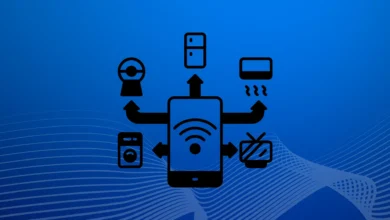The Impact of Technology on Sports: A Comprehensive Analysis

With the latest technological advancements, the realm of sports has not remained the same as any other. Integrating innovation in sports has given birth to a whole new level of athleticism. Every game has been reshaped, and the experience has emerged. The impact of Technology on sports has dramatically benefited the sports industry, from enhancing performance to making the game officiating process efficient.
In today’s world, technology has become an integral part of sports and sportsmanship. Those days are long gone when raw physical strength and instinctive decision-making were the only way to perform better. Whether talking about the athlete on the field, the coach on the bench, or the spectators in their seats, every experience was enhanced Thanks to technology.
High-tech sports equipment has been introduced throughout the years. For the spectators, integrating intelligent camera movements, live broadcasts of every game, and instant replays have immersed their experience.
In this comprehensive guide, we will take on the different areas where technology has impacted, what shifts the sports world has taken, and how it has benefited the whole experience.
Technological Advancements in Training and Performance
Wearable Fitness Devices
Wearable fitness devices, especially Watches, are playing a significant role in assisting us in tracking athletic performance. These devices are equipped with sensors and technology that collect several types of data from the person wearing them. This data includes heart rate, calories burned, steps taken, and more. With these wearables, the user gets deeper and more precise information about his body, resulting in taking initiatives for the betterment.
These devices have eradicated the need to write down everything on paper and track everything manually. With their advanced features, athletes have the ability to get real-time insights. These insights provoke informed decisions among individuals so they can make better progress, recovery, or healthy decisions.
Virtual Reality Training
We have seen virtual reality in games and movies till now. And without a doubt, we are already fascinated by it. And what it has brought to the table for an athlete is out of this world.
The athletes are now training in simulations without needing to go to a proper field and practice in many uncertainties, like unusual weather. With virtual reality training, people are now training at their homes, a small gym. This approach to training has offered significant benefits to athletes as they can practice without worrying about injuries or any potential risks associated with on-field training.
They can try it over and over again with just a single click. Moreover, the immersive world of virtual reality enhances the psychological aspect by helping athletes better develop focus. If you can’t connect your TV with VR, then read the guide about how to connect virtual reality to TV.
Data Analytics and Performance Insights
Analysis techniques for both athletes and team dynamics have been highly affected by the impact of technology on sports. Whether it’s about tracking the player’s movements and ball trajectories or collecting game statistics, everything is assisted by advanced innovation. The need for a pen and paper to note down everything has long been gone, and these are now automated.
Coaches, players, and teams can better understand their weaknesses and strengths, enabling them to develop effective strategies. This approach to in-depth analysis goes beyond just stats; it provides insights into player behavior, team coordination, and tactical advantages. By identifying patterns from the data, coaches and players can adjust their game strategies, training regimens, and team dynamics.
Advanced Refereeing and Fair Play
While fans and athletes utilize the benefits of technological advancements, referees and the concept of fair play have also seen significant improvements due to innovative technologies.
Goal-Line Technology
Gone are controversial soccer decisions: “Was it in or out.” Goal-line technology utilizes cameras and sensors to accurately determine whether a ball has crossed the goal line. This technology leaves no room for human error or bias, confirming that crucial decisions are made with precision and fairness.
Video Assistant Referee (VAR)
Video Assistant Referee, or VAR, has transformed how referees make critical decisions during a match. Through video replays and multiple camera angles, VAR assists referees in making accurate calls regarding offside plays, penalty decisions, and red card incidents. While VAR has sparked its debates, its presence underscores the sport’s commitment to ensuring fairness and minimizing mistakes.
Enhanced Viewing Experience
Technology has turned the simple act of watching a game into a multisensory extravaganza that goes beyond the limits of traditional broadcasts.
Ultra High-Definition (UHD) and 4K Broadcasting
The days of fuzzy, pixelated broadcasts are long gone. Ultra High-Definition (UHD) and 4K broadcasting have risen in an era of crystal-clear visuals, allowing fans to see every detail, from the sweat on players’ brows to the texture of the grass. This level of visual quality has made watching sports a more immersive and engaging experience.
360-Degree Cameras
360-degree cameras have added a new dimension to sports broadcasting. These cameras capture the action from all angles, allowing viewers to choose their perspective. Want to see a slam dunk from the player’s point of view? With 360-degree cameras, you can. This technology puts fans in control of their viewing experience, making them active participants in the game.
Impact on Sports Medicine and Injury Management
Beyond the arena, technology has also made significant strides in sports medicine, revolutionizing injury prevention, diagnosis, and rehabilitation.
Biomechanics and Biometric Analysis
Technology has given sports scientists the tools to analyze an athlete’s movements and biomechanics in detail. Wearable sensors and motion-capture systems collect data that helps identify potential issues in an athlete’s form, leading to more effective training regimens and injury prevention strategies. The biometric analysis also aids in tracking an athlete’s physiological parameters, enabling a better understanding and management of their overall health.
Regenerative Medicine and Wearable Health Tech
Advancements in regenerative medicine have accelerated the recovery process for athletes. Treatments like stem cell therapy and platelet-rich plasma injections have the potential to heal injuries faster and more effectively. Additionally, wearable health technologies like smart compression garments and monitoring devices offer real-time insights into an athlete’s recovery progress, allowing medical teams to tailor their treatment plans accordingly.
Challenges Brought by Technology
While technology has undoubtedly enhanced various aspects of sports, it also comes with its own set of challenges.
Over-Reliance on Technology
As technology becomes more integrated into sports, there’s a concern that athletes might become overly reliant on data and gadgets, potentially compromising their natural instincts and creativity. The delicate balance between leveraging technology and nurturing innate athletic abilities is an ongoing consideration.
Privacy and Data Security
The collection of extensive athlete data, both on and off the field, raises concerns about privacy and data security. With wearable devices tracking personal health information and performance metrics, ensuring the proper handling and protection of this sensitive data is paramount.
The Impact of Technology on Sports: The Future
Looking ahead, the combination of sports and technology shows no signs of slowing down, offering exciting possibilities for athletes, fans, and the industry.
Artificial Intelligence in Sports
Artificial Intelligence (AI) is poised to play a more significant role in sports, aiding coaches and analysts in processing vast amounts of data to uncover patterns and insights that might otherwise go unnoticed. AI-powered training programs and simulations could further revolutionize how athletes prepare for competitions.
Smart Stadiums
The future stadiums are set to be intelligent, interactive spaces that enhance the fan experience. From personalized seat recommendations to interactive displays and augmented reality experiences, smart stadiums will create an immersive environment that blurs the lines between the physical and digital worlds.
Conclusion
Technology’s influence on the world of sports has been transformative, touching every fabric of the sports industry. It all has a great impact on technology in sports. Technology has elevated sports to new heights, from training methods that leverage virtual reality to fans engaging with AR overlays and VR experiences.
Refereeing has become more precise with goal-line technology and VAR, while the viewing experience has been enriched through UHD broadcasting and 360-degree cameras. Sports medicine has embraced biomechanics and wearable health tech, optimizing athlete performance and recovery. However, these advancements come with challenges, such as over-reliance on technology and data privacy concerns.
FAQs
Q1: How Has Virtual Reality Impacted Sports Training?
Using virtual reality, athletes have a safe and controlled environment to practice and refine their skills, making their sports training immersive.
Q2: What Is The Role Of AI in Sports?
AI is used for analyzing complex data, predicting game results, and finding patterns that impact overall player performance and team strategies.
Q3: Are There Concerns About Technology Removing The Human Element From Sports?
Yes, there are concerns about athletes relying solely on data and devices instead of dedicating themselves to being better sportspeople.
Q4: How Do Intelligent Stadiums Enhance The Fan Experience?
Smart stadiums offer personalized and interactive experiences for fans, providing real-time statistics.





